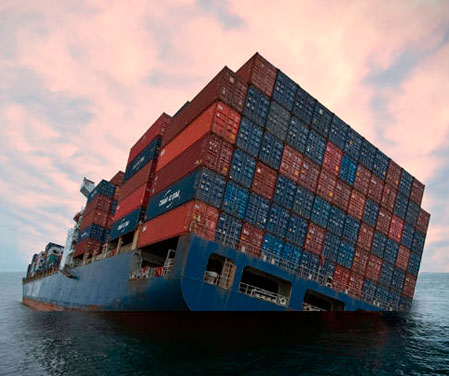What does cloud transformation mean for legacy custom off the shelf software aka COTS ? Yes we are talking of rules engines , portals, commerce engines, BPMs, etc and other products from IBM, Redhat, Oracle and other vendors built on big application servers and other forms of middleware....
1. Operational efficiency provided by PKS for managing the upgrade of both the platform(K8s) and the CustomOffTheShelf software. If done right zero downtime, rolling updates, canary blue/green upgrades can be done with minimal fuss. Advanced deployment policies provided by K8s enables the deploy and release of builds without impact on upstream / downstream systems providing loose coupling.
2. Infrastructure consolidation and better utilization of hardware via horizontal auto-scaling. Depending on the workload you can attach certain COTS to certain nodes if hardware affinity is required. PKS/K8s has a better story for hardware affinity if the COTS needs some special GPU/CPU/Memory.
3. Most COTS vendors will move to a container based deployment model in the future. Installers shall become moot. This is the future. K8s dial-tone is a must for all future deployment of COTS.
4. Through various value adds that PKS provides for logs. metrics, telemetry, clusters, fine-grained security, health-watch, network micro-segmentation - you will get better uptime, stability and resiliency of your COTS platform if deployed right. Monitor end-to-end to gain insight and make informed decisions using the insights provided by PKS. Kubernetes along with BOSH provides proactive system health and automated health management at the container level
5. Developer Benefits include more consistent environments. On demand environments for COTS can be stamped out as opposed to manual provisioning. Putting it in a container allows deployment across zones and across different cloud providers realizing the multi-cloud dream and avoiding BIG cloud vendor lockin.
6. Putting the COTs in a Container and deploying with a K8s platform like PKS provides flexibility in dynamic routing and service discovery to start strangling the functionality from COTs if so desired. This provides a gateway to modernization.
7. If the COTS is non-strategic, deploying it in k8s provides a long term resting place that is coherent with the cloud strategy.
8. COTS in PKS + microservices in PAS provides for the right abstraction to run at the right platform level. Recommend keeping COTS vanilla, build customization using Boot microservices
9. K8s updates every quarters. COTS vendors and everyone else are playing catchup and moving to a faster upgrade - AsAService cycle. As an IT organization COTS in PKS helps you get ahead of this curve. If done right Pace is an immense leverage to your organization.
10. Developers love containers and can run the COTS locally through a docker image whereas earlier they would have to spend a lot of hours in arcane setup. They get all the goodness of docker aka OCI compliant container images.
1. Operational efficiency provided by PKS for managing the upgrade of both the platform(K8s) and the CustomOffTheShelf software. If done right zero downtime, rolling updates, canary blue/green upgrades can be done with minimal fuss. Advanced deployment policies provided by K8s enables the deploy and release of builds without impact on upstream / downstream systems providing loose coupling.
2. Infrastructure consolidation and better utilization of hardware via horizontal auto-scaling. Depending on the workload you can attach certain COTS to certain nodes if hardware affinity is required. PKS/K8s has a better story for hardware affinity if the COTS needs some special GPU/CPU/Memory.
3. Most COTS vendors will move to a container based deployment model in the future. Installers shall become moot. This is the future. K8s dial-tone is a must for all future deployment of COTS.
4. Through various value adds that PKS provides for logs. metrics, telemetry, clusters, fine-grained security, health-watch, network micro-segmentation - you will get better uptime, stability and resiliency of your COTS platform if deployed right. Monitor end-to-end to gain insight and make informed decisions using the insights provided by PKS. Kubernetes along with BOSH provides proactive system health and automated health management at the container level
5. Developer Benefits include more consistent environments. On demand environments for COTS can be stamped out as opposed to manual provisioning. Putting it in a container allows deployment across zones and across different cloud providers realizing the multi-cloud dream and avoiding BIG cloud vendor lockin.
6. Putting the COTs in a Container and deploying with a K8s platform like PKS provides flexibility in dynamic routing and service discovery to start strangling the functionality from COTs if so desired. This provides a gateway to modernization.
7. If the COTS is non-strategic, deploying it in k8s provides a long term resting place that is coherent with the cloud strategy.
8. COTS in PKS + microservices in PAS provides for the right abstraction to run at the right platform level. Recommend keeping COTS vanilla, build customization using Boot microservices
9. K8s updates every quarters. COTS vendors and everyone else are playing catchup and moving to a faster upgrade - AsAService cycle. As an IT organization COTS in PKS helps you get ahead of this curve. If done right Pace is an immense leverage to your organization.
10. Developers love containers and can run the COTS locally through a docker image whereas earlier they would have to spend a lot of hours in arcane setup. They get all the goodness of docker aka OCI compliant container images.

